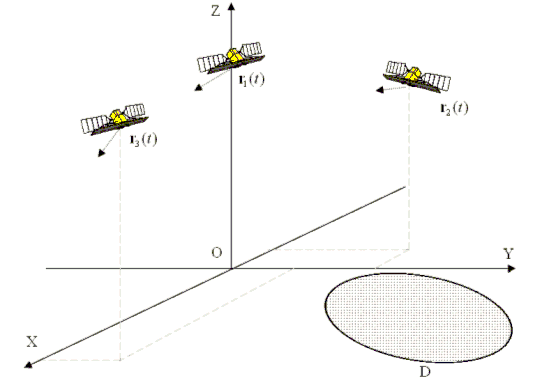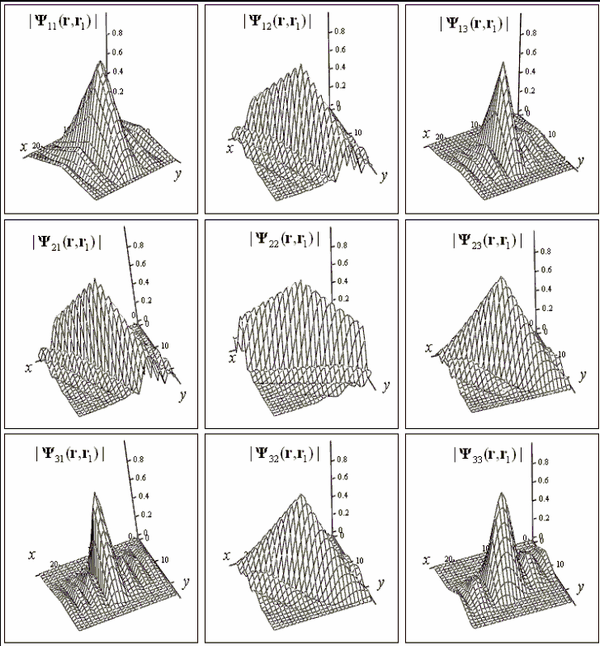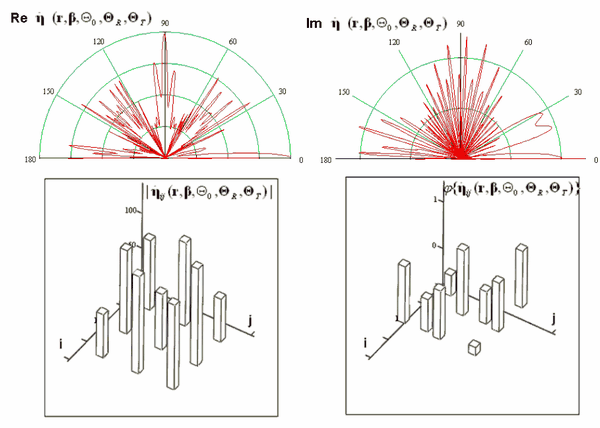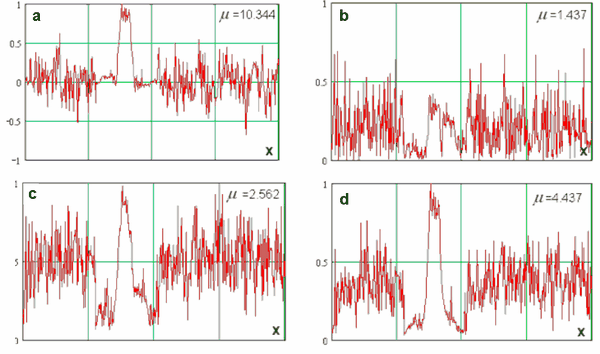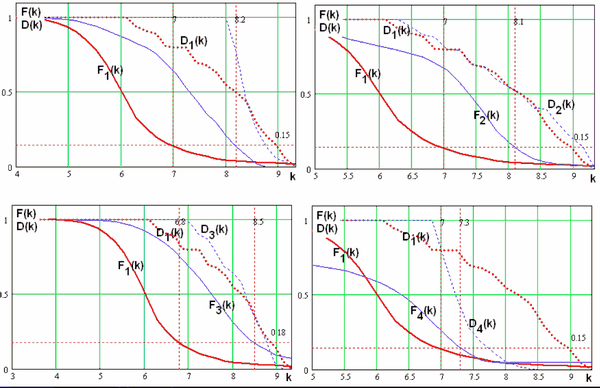|
|
Multiposition Synthetic Aperture Radar (MPSAR) Alexander V Ksendzuk |
| Main Page |
5. Multiposition SAR. Objects detection. In this section objects detection problem in multiposition SAR are described. Objects in this section are any spatially-distributed or small surface regions natural or artificial (fire/flood regions, forests, buildings, vessels, cars etc.). General scheme of the MPSAR detection problem is shown in Figure 5.1, object observed against a background of additive noise and scattering from the surface.
Figure 5.1. MPSAR detection geometry. |
| Signal Model | |
| Geometry | |
| Optimal Signal Processing | |
| Object detection | |
| Multiposition SAR interferometer | |
| Pseudonoise signals in remote sensing systems | |
| Pseudo-passive SAR | |
| Remote sensing systems modeling principles | |
| About Author | |
| Links | |
|
These objects can be described by distribution of the complex scattering coefficient of the objects as function of the observation parameters (bistatic angles, carrier frequencies, polarization etc.) ¢ functionally determined model of the object. Another kind of objects ¢ stochastic ¢ can be described only by statitical characteristics of the complex scattering coefficient (in the simplest case ¢ radar cross-section which is dispersion of the complex scattering coefficient, see Section 2). There are two main possible alternatives of the MPSAR detector creation - detection with further coprocessing and coprocessing with further detection.
Figure 5.2. MPSAR detection.
First alternative, Figure 5.1, - detection in each receiver with further coprocessing of the results. This kind of detector is not ōquite goodö because of stochastic character of the primary processing (speckle noise) and, therefore, it is difficult to derive strict coprocessing algorithms. Coprocessing in this case must be based on exact statistical characteristics of the single detectors. As well as these characteristics depends on bistatic pairs output, which is distorted by speckle noise, it is usually impossible to create MPSAR detector with required quality characteristics (true detection and false alarm probabilities).
Figure 5.3. MPSAR detection Second alternative , Figure 5.2, - coprocessing of the input processes in different receivers with further object detection. Coprocessing (which can be considered as weighted statistical averaging) allows to increase quality and stability of the detector. In other words coprocessing allows to eliminate speckle noise by averaging over different images, therefore further detection will be done with lower noise level and exact characteristics of the detector. This conclusion can be easily examined by statistical modeling. Later in this Section we consider detector, which is shown in Figure 5.3 ¢ detection after coprocessing. Significant advantages of the multiposition SAR are - possibility to detect objects hidden for some bistatic pairs, Figure 5.4 a, b; - possibility to detect targets even if their backscattering diagram is ōalmost zeroö for some receivers (stealth objects as well), Figure 5.4 c; - possibility of detection and identification of objects, width of which is closer/smaller than resolution, Figure 5.4 d.
Figure 5.4. MPSAR advantages in objects detection. 5.1. Optimal and quasioptimal detection of the objects described by complex scattering coefficient dependence. Input process in multiposition SAR will be vector each coordinate of which describes by equation (5.1)
where scattering from the object
Spatial function
In this subsection we will consider objects which complex scattering coefficient maybe represented as follows
where
For the object detection we will
use optimal coprocessing algorithm, which estimates
may be derived into three components: signal (coprocessing of the signals scattered from the object)
background (scattered from the surface)
and noise component (caused by presence of the additive noise in receivers inputs):
After this processing objects on
the radar image (it will be one image - result of coprocessing, this image
will be used for object detection) will be represented by value
Optimal detection algorithm will
be
where left part contains operation over input process and right ¢ is a threshold calculation. Quasioptimal algorithms can be based on some assumptions (noise independence in different receiver channel) as well as based on absence of the required a-priory data (we know only amplitude or modulo backscattering diagram and donÆt know phase etc.). Important particular case ¢ detection of the small objects (objects width of which is smaller or near to resolution of the system). In this case optimal detection algorithm (5.6) simplifies to
5.2. Optimal and quasioptimal detection of the objects described by statistical characteristics of the complex scattering coefficient.
In this case we detect objects,
which are given by distribution of the statistical characteristics of the
scattering coefficient. All algorithms were derived to detect objects,
which are
given by dependence of the correlation function of the scattering coefficient
Suppose that correlation function of the object complex scattering coefficient can be written as follows
where
Optimal coprocessing is based on
estimation of
can be derived into three components: signal (coprocessing of the signals scattered from the object)
background (scattered from the surface)
and noise component (caused by presence of the additive noise in receivers inputs):
These outputs differs from the equation because we perform coprocessing based on assumption that scattered signal is stochastic process. DetectorÆs output based on equation
where
Equation for
Distinctive feature of the algorithms based on detection objects, which is given by distribution of the correlation function of the complex scattering coefficient, is increasing of the dimension number of the coprocessing result (as well as we estimate correlation function). For example, in surveillance radar with one-dimensional image (estimation of the complex scattering coefficient as the function of range) result of the correlation function estimation will be two-dimensional. Number of quasioptimal algorithms which were based on some assumptions (noise independence in different receiver channel) as well as based on absence of the required a-priory data (we know only amplitude or modulo backscattering diagram and donÆt know phase etc.) were derived. 5.3. Quality of the detection. For wide range of the objects and backgrounds result of detection strongly depends on signal-to-noise ratio of the radar image which is used for object detection. In our case it is a result of coprocessing. Generally, noise level in this ōimageö will be lower than for the image, achieved for the same scene in bistatic/monostatic SAR. This fact leads from averaging of the output and, therefore, eliminating of the speckle noise and additive noise. For the proposed algorithms signal-to-noise ratio
depends on components
This equations should be used for optimization of the spatial configuration, signal forms and other MPSAR parameters to provide higher quality of the multiposition detector.
5.4. Multiposition SAR. Objects detection statistical modeling. Consider multiposition SAR, which consists of three transmitters, Figure 5.5.
Figure 5.5. Spatial configuration of the MPSAR.
This system characterizes by matrix of the space ambiguity function (row - number of transmitter, column - number of receiver) which is shown in Figure 5.6.
Figure 5.6. MPSAR matrix of the space ambiguity function.
Object to be detected characterizes by scattering properties, as function of bistatic angles (we mean that MPSAR uses signals at the same frequency) which is shown in Figure 5.7.
Figure 5.7. Complex scattering coefficient of the object to be detected as the function of bistatic angle, cross-section (upper images). And values of the complex scattering coefficient (amplitude and phase) for the considered multiposition SAR, Figure 5.5.
Results of the optimal and quasioptimal signal coprocessing are shown in Figure 5.8.
Figure 5.8.
Results of the optimal and quasioptimal coprocessing in multiposition SAR and
appropriate signa-to-noise ratio
Results of the detectors quality estimation as functions of the relative threshold are shown in Figure 5.9. Usage dependence from the relative threshold allows to estimate stability of the detector in case when threshold was chosen with error (caused by improper determination of the object/background scattering, variation of the transmitted signals power, additive noise power variation, atmospheric distortion etc.).
Figure 5.9. Quality of the detectors. F- probability of false alarm, D- probability of true detection. a - optimal algorithm, b -result of the non-weighed addition of the radar images modulo, achieved in different receivers; c - result of the non-weighed addition of the radar images, achieved in different bistatic pairs; d - result of the weighed addition of the radar images modulo, achieved in different bistatic pairs
Conclusion. Significant advantages of the multiposition SAR are possibility to detect objects hidden for some bistatic pairs; possibility to detect targets even if their backscattering diagram is ōalmost zeroö for some receivers (stealth objects as well); possibility of detection and identification of objects, width of which is closer/smaller than resolution. Multiposition detector should be based on coprocessing of the input processes in different receivers with further object detection. This way allows to detect objects with higher quality in comparison with other methods of the MPSAR detection. Optimal and quasioptimal detection algorithms were derived for two kinds of the objects- given by distribution of the complex scattering coefficient and objects given by distribution of the statistical characteristics of the object complex scattering coefficient. As we can see from the modeling results, proposed detection method in multiposition SAR is a high-stable, allows to detect objects with high probability of true detection along with low probability of the false alarm in comparison with monostatic/bistatic SAR. |
|
|
e-mail to author: Alexander V Ksendzuk |

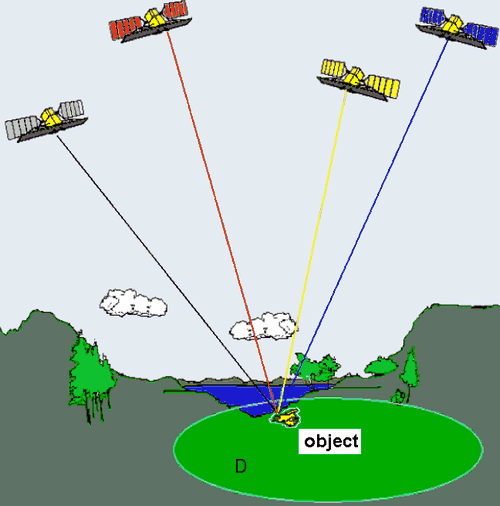


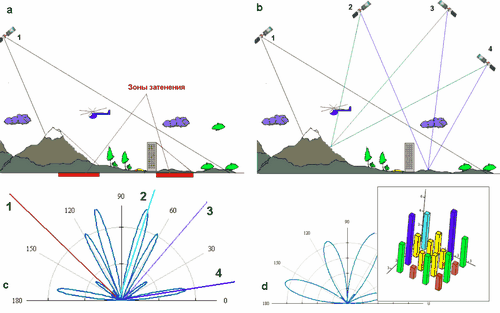





 ,
, 








